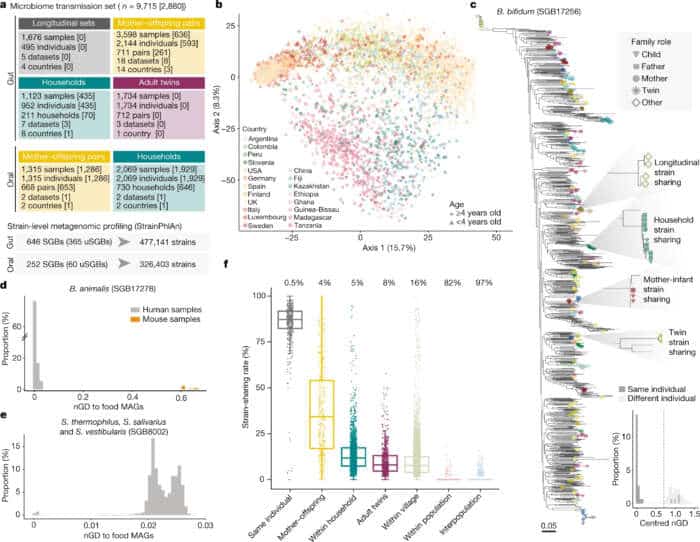A groundbreaking study published in the journal Nature has shed new light on the potential communicability of non-communicable diseases (NCDs), such as type 2 diabetes and inflammatory bowel disease. The study’s findings suggest that the microbiome, a collection of microorganisms that inhabit the human body, may play a key role in the development and transmission of NCDs.
The study, which analyzed the gut microbiomes of over 1100 individuals from 10 different countries, found that specific changes in the microbiome were associated with certain NCDs. For example, individuals with type 2 diabetes had an overabundance of a particular species of bacteria, while those with inflammatory bowel disease had reduced diversity in their microbiomes.
These findings suggest that NCDs may actually be communicable, or at least influenced by factors that are shared between individuals. This has significant implications for public health, as it suggests that targeting the microbiome may be a promising approach to preventing or treating NCDs.

Lead Author Dr. Rob Knight
Lead author of the study, Dr. Rob Knight of the University of California, San Diego, emphasized the importance of understanding the microbiome in the context of NCDs. “Our results suggest that NCDs may be communicable through the microbiome, which has important implications for public health, “ he said. “By targeting the microbiome, we may be able to prevent or treat these diseases in a more effective manner.”
The study’s findings also have important implications for personalized medicine, as they suggest that understanding an individual’s microbiome may be key to developing targeted treatments for NCDs. “Each person’s microbiome is unique, so understanding the factors that shape it may help us develop personalized treatments that target specific imbalances in the microbiome, “ said Dr. Knight.
Overall, this study represents a major breakthrough in our understanding of NCDs and their potential communicability. While more research is needed to fully understand the mechanisms underlying the microbiome-NCD connection, these findings offer new hope for preventing and treating these increasingly prevalent and debilitating diseases.
Key Takeaways in Non-Communicable Diseases Study
- Non-communicable diseases may be influenced by shared factors through the microbiome.
- The study suggests targeting the microbiome may help prevent or treat NCDs.
- Understanding an individual’s microbiome may lead to personalized treatments for NCDs.
The Paper
Here is what the paper points out in its opening: The genetic makeup of the human microbiome changes over time and is influenced by factors like diet and lifestyle. While colonization of the gut by microorganisms is largely seeded by maternal transmission, this alone cannot account for the large diversity of microorganisms found in adults.
Science is never “settled” and in the case of the microbiome, we are still trying to understand it and we currently know very little.
The process by which microorganisms are acquired, transmitted, and spread in populations, and how this shapes the personal microbiome genetic makeup, is not well understood.
The limited number and size of accurately designed studies and difficulties in consistently and comprehensively profiling microorganism conspecific strains have hindered research on this topic.
Strains are the individual-specific building blocks of the human microbiome and their profiling is necessary to distinguish transmission of microorganisms from microbiome convergence towards an overlapping set of species. Identifying the features of microbiome transmission will advance our understanding of the complexity of the human microbiome and can help address the communicable factor that microbiome transmission adds to diseases and conditions currently considered non-communicable.
A comprehensive description of the microbiome transmission landscape can aid in characterizing and quantifying patterns of person-to-person microbiome strain sharing across multiple scenarios.
See The person-to-person transmission landscape of the gut and oral microbiomes in Nature.
See also the Microbiome First virtual summit from May 2022.




